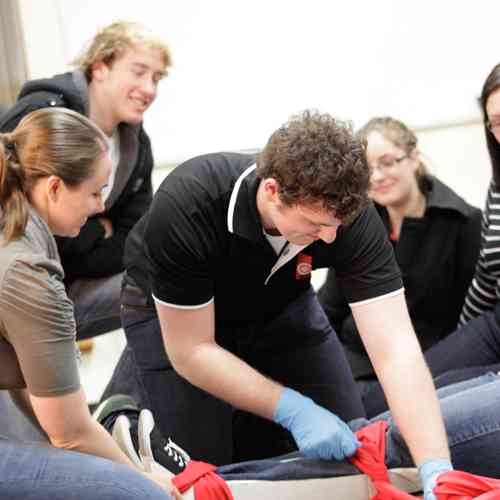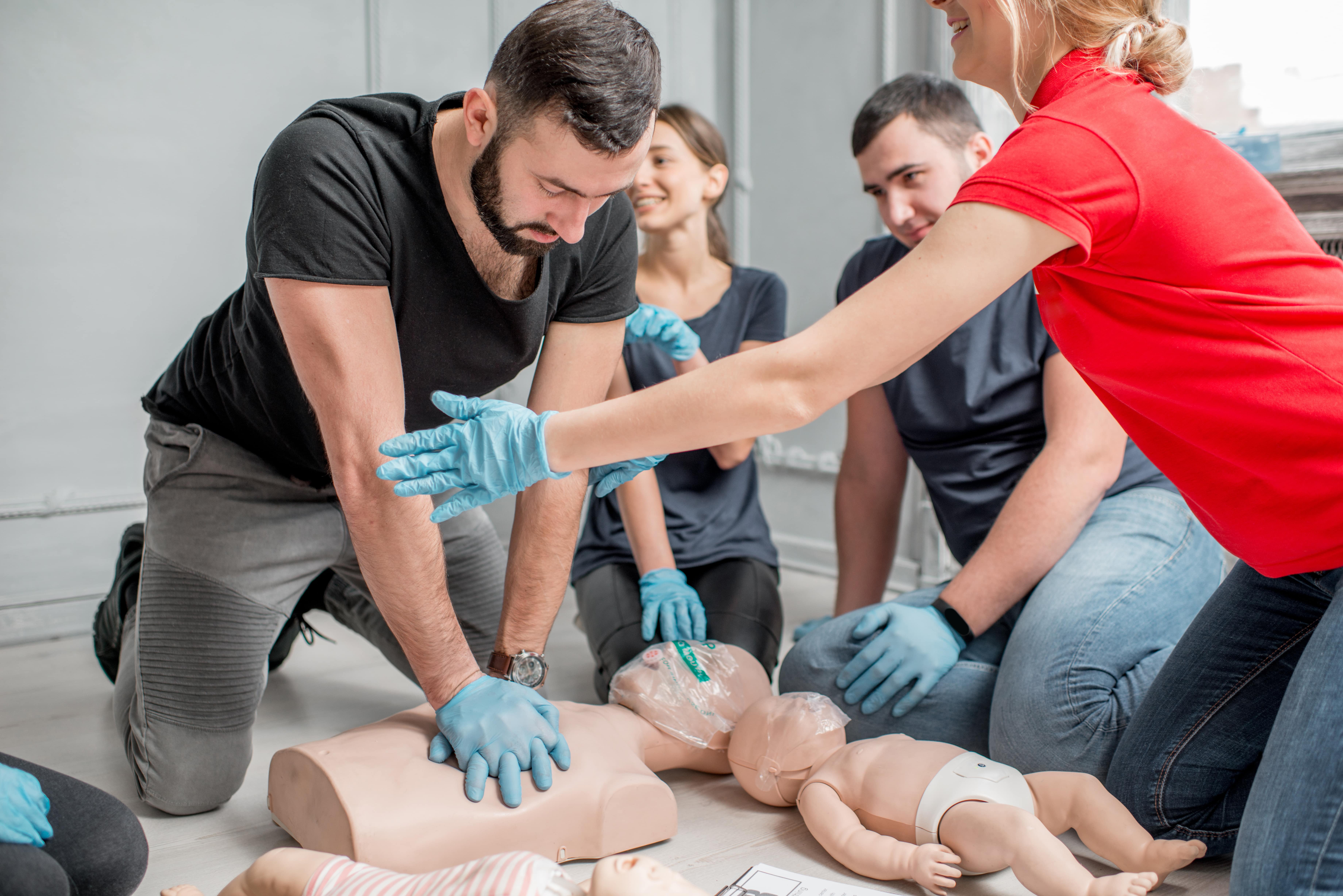Introduction
First help training is a vital ability that can conserve lives, giving immediate support to injured or ill individuals. Whether you're a parent, instructor, trainer, or simply a person that wants to be planned for emergency situations, understanding the different kinds of first aid courses offered is critical. These courses differ in content, duration, and qualification levels, satisfying numerous demands and environments.
In this extensive guide, we'll explore the nuances of first help courses, examining their value, the breadth of subjects covered, and how to choose the best program for you. With a focus on functional abilities like CPR (cardiopulmonary resuscitation), our emphasis will certainly aid you comprehend just how these classes furnish you with essential tools for emergency situation situations.
Understanding the Different Sorts of First Aid Gushes Available
What is an Emergency treatment Course?
A first help course is designed to instruct individuals just how to offer instant care in emergency situations. The educational program frequently covers a wide array of topics including injury care, choking alleviation strategies, and providing CPR.
Objectives of Emergency treatment Courses
- Immediate Care: Gear up individuals with abilities to manage emergencies till specialist help arrives. Prevention Education: Show individuals exactly how to stay clear of crashes and health and wellness crises. Confidence Building: Foster confidence in one's capability to act emphatically in emergencies.
The Value of mouth-to-mouth resuscitation Training
What is CPR?
CPR represents cardiopulmonary resuscitation. It's a lifesaving technique used when someone's breathing or heart beat has actually quit. Knowing CPR can dramatically boost survival prices for cardiac arrest victims.
Why Take a CPR Course?
Taking a CPR course not only prepares you for emergency situations however also improves your ability to react properly under pressure.
Key Elements Covered in CPR Courses:
- Chest compressions technique Rescue breaths Use of automated outside defibrillators (AEDs)
Types of Emergency treatment Courses Available
Basic First Aid Course
A fundamental first aid course normally covers fundamental skills needed for giving treatment in emergency situations.
Common Subjects:
Wound management Bandaging techniques Recognizing signs of shockAdvanced First Aid Course
This training course dives much deeper into more complicated scenarios such as handling multiple casualties or details medical conditions.
Focus Areas:
- Advanced injury care Emergency giving birth procedures Managing chronic illnesses in emergencies
Specialized First Aid Courses
Different professions require customized emergency treatment training. Below are some specialized options:
Pediatric First Aid Course
Designed for those dealing with children-- parents, educators, and caretakers-- this course focuses on age-specific considerations.
Highlights:
- Choking alleviation for infants Common childhood ailments Behavioral problems throughout emergencies
Workplace First Aid Course
Tailored particularly for workplace environments, this training course educates workers exactly how to handle events usual in specific settings like manufacturing facilities or offices.
Key Features:
- Risk analysis techniques Emergency emptying procedures Handling chemical spills or injuries
Online vs. In-Person First Aid Courses
With advancements in technology, numerous organizations now offer on the internet programs alongside conventional in-person sessions.
Advantages of Online Courses:
Flexibility: Learn at your very own pace. Accessibility: Participate in from anywhere with an internet connection. Cost-effective: Usually less expensive than classroom settings.Disadvantages of Online Courses:
Limited hands-on practice. Less interaction with instructors. Potentially lower engagement levels.How to Select the Right First Aid Course
Choosing the appropriate first help and mouth-to-mouth resuscitation course can be complicated provided the variety offered today.
Considerations When Choosing a Course:
Your Needs: Are you preparing for home treatment or workplace safety? Duration: Just how much time can you commit? Certification Requirements: Do you need certification for your job?Finding Accredited Emergency treatment Courses
When selecting an emergency treatment course, ensure it's approved by identified organizations such as the American Heart Organization (AHA) or Red Cross.



Accreditations Issue Since They Make sure:
- Quality training standards Recognition by companies and institutions Updated educational program mirroring present standards
First Help Certification Process
Steps to Get Your First Aid Certificate
Once you've completed your chosen emergency treatment course, obtaining your certificate normally requires numerous steps:
Complete the training program successfully. Pass any kind of required exams or assessments. Receive your certification through email or postal service.Validity Duration of First Aid Certificates
Most first aid certificates stay legitimate for 2 to 3 years depending on the releasing body; hence it's important to restore them on a regular basis with refresher course courses.
The Influence of Effective First Aid Training
Real-Life Situations Where Emergency treatment Made a Difference
Numerous accounts exist where timely emergency treatment treatment conserved lives-- from cardiovascular disease cases at showing off events to choking events in your home dinners.
Case Study Example: Sudden Cardiac Arrest
In one renowned instance during a neighborhood marathon event, skilled volunteers provided CPR successfully causing successful resuscitation before paramedics arrived.
Benefits Past Immediate Care
Learning first aid also produces psychological advantages such as enhanced confidence and preparedness which equates into enhanced area well-being overall.
Frequently Asked Concerns (Frequently asked questions)
1) What is consisted of in a common emergency treatment course?
A criterion emergency treatment course includes standard techniques like wound therapy, recognizing signs and symptoms of distress (like shock), and carrying out CPR when necessary.
2) How much time does it require to finish an emergency treatment course?
Most fundamental programs last in between 4-- 8 hours while innovative courses may CPR Course Adelaide extend over numerous days depending upon web content depth and complexity.
3) Can I discover emergency treatment online?
Yes! Numerous organizations offer thorough on the internet training programs; nevertheless practical hands-on experience is urged as well whenever possible.
4) Is qualification required by law?
While not mandated by law universally, certain careers do need qualifications such as showing personnel or medical care workers; always check regional regulations!
5) How frequently ought to I renew my first aid certification?
Typically every 2 years; nevertheless this can depend upon the organization supplying your preliminary training-- inspect their guidelines!
6) Suppose I require unique accommodations during training?
Most recognized programs enable adjustments; connect straight with the training carrier concerning specific demands prior to enrollment!
Conclusion
Understanding the various types of first aid training courses readily available equips individuals not just with understanding but additionally cultivates a setting where individuals really feel safe knowing they can react properly during emergency situations. By investing time into learning these crucial skills-- whether via typical methods or modern on the internet platforms-- you're taking positive steps toward making your community much safer for every person involved!
Whether you want getting your first help certificate, looking into specialized programs like pediatric care courses or merely wanting to review your skills through refresher course courses-- the options are abundant! So why wait? Dive into discovering these opportunities today!